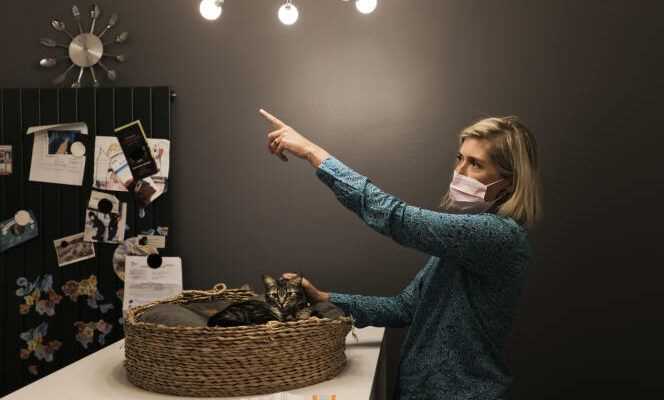If there is an area in which human medicine and veterinary medicine should working together is the fight against antibiotic resistance. Antimicrobials are needed to treat a large number of infections in humans and animals alike, but their inappropriate use has led to the emergence of resistant strains of bacteria over the decades, which are transmitted between species and jeopardize the efficacy of antimicrobials. treatments. Data on the use of antibiotics in veterinary medicine, published Thursday, November 18 by the National Agency for Food, Environmental and Occupational Health Safety (ANSES), attest to a marked drop in their use in France, with nuances depending on the species.
Fifteen years after Europe’s total ban on the use of antibiotics as a growth factor in farm animals, further progress has been made in the veterinary use of these treatments. ANSES’s publication is based on several indicators: sales declared by laboratories, but also animal exposure, i.e. the ratio between the biomass treated and the total biomass, which takes into account the dosage. and the duration of drug administration and, finally, the monitoring of bacteria resistant to antibiotics.
Rises that call for vigilance
Since 2011, the year in which the first government Ecoantibio plan was launched, the overall exposure of animals to antibiotics has fallen by 45.4%. The decrease is very significant in poultry (- 64.4%) and pigs (- 55.5%), but more modest in cattle (- 22.5%) and cats and dogs (- 11.8%) ). The annual change in 2020 alone is more contrasted: in some sectors, the decline continued, as for poultry (- 9.7% between 2019 and 2020) and pigs (- 3.2%), while an increase is observed in rabbits (+ 2.5%), cattle (+ 2.9%) and, above all, in cats and dogs (+ 5.1%).
For the health agency, these increases call for vigilance, even if cyclical factors may intervene, such as bad weather for example. The treatment of cats and dogs is a particular alert to ANSES, which makes several hypotheses: increased attention during confinement to signs of infection, postponement of care and management of pathologies at more advanced stages, etc.
“In pet medicine, we are on an individual medicine, which is similar to human medicine, explains Gilles Salvat, Deputy Director General of ANSES. We are not in a herd pathology, we are in a strategy where we have to save the animal and sometimes come up against therapeutic dead ends such as, for example, skin pathologies in dogs which require long treatments. “
You have 42.35% of this article to read. The rest is for subscribers only.
